LHAASO has started conducting scientific observations
China's Large High Altitude Air Shower Observatory (LHAASO) launched its first set of detectors on April 26, 2019. It marked the beginning of comprehensive research effort in observing and detecting very high energy cosmic rays with the anticipated world most sensitive gamma ray detection facility.
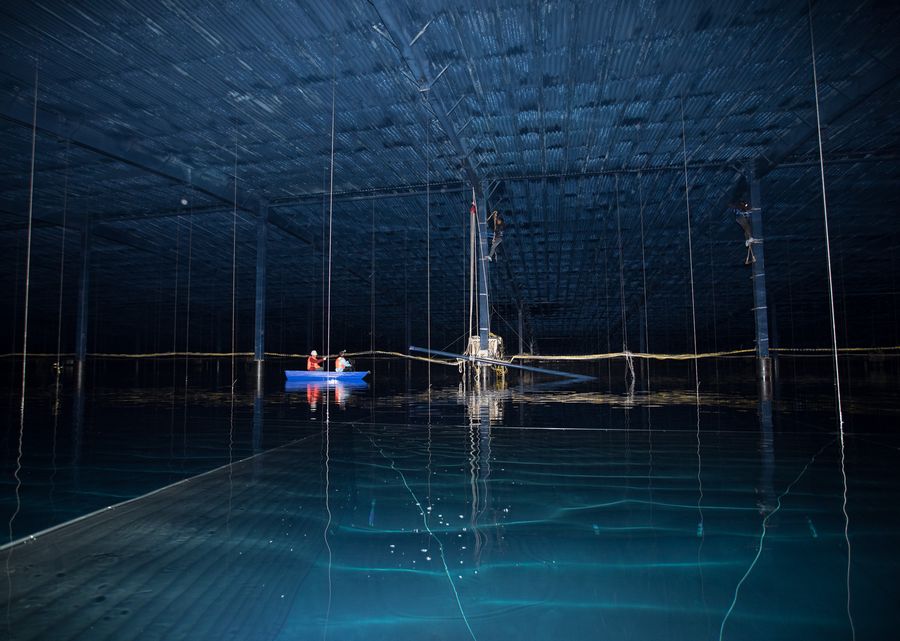
A researcher and a worker maintain water Cherenkov detectors in Daocheng County, southwest China's Sichuan Province, April 28, 2019. An observatory for detecting cosmic rays in southwest China's Sichuan Province recently began scientific observation as it launched operation of its first set of detectors. The project, known as Large High Altitude Air Shower Observatory (LHAASO), is located in the mountains of the eastern Qinghai-Tibet Plateau at an altitude of 4,410 meters. (Xinhua/Jin Liwang)

Researcher Cao Zhen (5th, R) from the China Academy of Sciences, chief scientist of the Large High Altitude Air Shower Observatory (LHAASO), explains to domestic and foreign experts in Daocheng County, southwest China's Sichuan Province, April 27, 2019. An observatory for detecting cosmic rays in southwest China's Sichuan Province recently began scientific observation as it launched operation of its first set of detectors. The project, known as Large High Altitude Air Shower Observatory (LHAASO), is located in the mountains of the eastern Qinghai-Tibet Plateau at an altitude of 4,410 meters. (Xinhua/Jin Liwang)
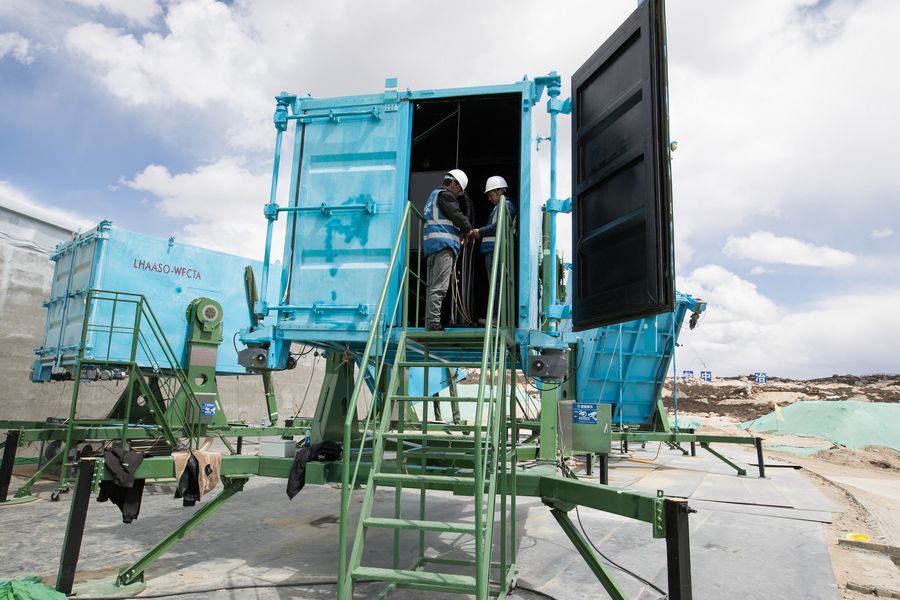
Dr. Zhang Shoushan (R) and a worker maintain wide-angle Cherenkov telescopes in Daocheng County, southwest China's Sichuan Province, April 28, 2019. An observatory for detecting cosmic rays in southwest China's Sichuan Province recently began scientific observation as it launched operation of its first set of detectors. The project, known as Large High Altitude Air Shower Observatory (LHAASO), is located in the mountains of the eastern Qinghai-Tibet Plateau at an altitude of 4,410 meters. (Xinhua/Jin Liwang)
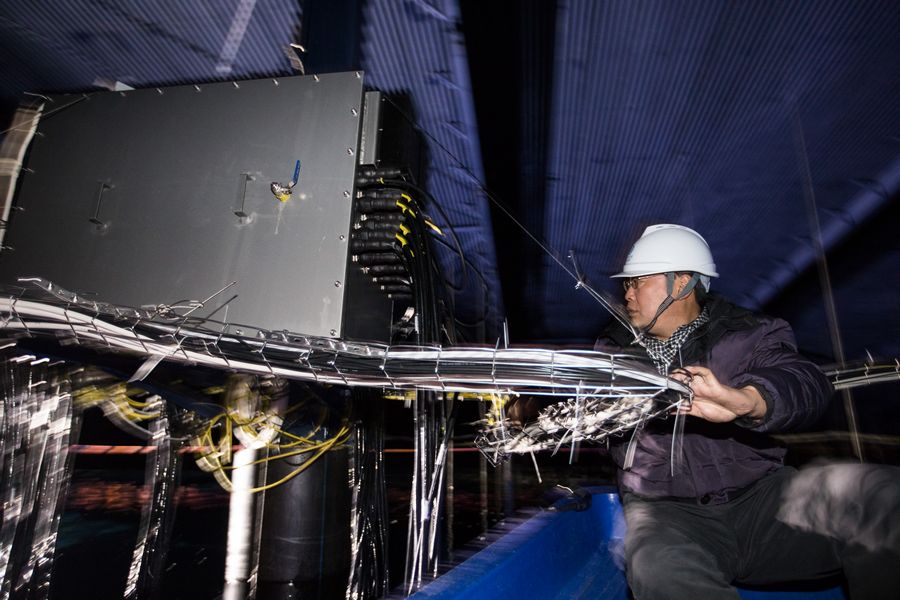
Researcher Cao Zhen from the China Academy of Sciences, chief scientist of the Large High Altitude Air Shower Observatory (LHAASO), checks the maintenance status of water Cherenkov detectors in Daocheng County, southwest China's Sichuan Province, April 28, 2019. An observatory for detecting cosmic rays in southwest China's Sichuan Province recently began scientific observation as it launched operation of its first set of detectors. The project, known as Large High Altitude Air Shower Observatory (LHAASO), is located in the mountains of the eastern Qinghai-Tibet Plateau at an altitude of 4,410 meters. (Xinhua/Jin Liwang)

Researchers and construction workers have lunch at the construction site of the Large High Altitude Air Shower Observatory (LHAASO) in Daocheng County, southwest China's Sichuan Province, April 28, 2019. An observatory for detecting cosmic rays in southwest China's Sichuan Province recently began scientific observation as it launched operation of its first set of detectors. The project, known as Large High Altitude Air Shower Observatory (LHAASO), is located in the mountains of the eastern Qinghai-Tibet Plateau at an altitude of 4,410 meters. (Xinhua/Jin Liwang)

Dr. Ma Lingling from the China Academy of Sciences inhales oxygen to ease the altitude stress upon her arrival in Daocheng County, southwest China's Sichuan Province, April 27, 2019. An observatory for detecting cosmic rays in southwest China's Sichuan Province recently began scientific observation as it launched operation of its first set of detectors. The project, known as Large High Altitude Air Shower Observatory (LHAASO), is located in the mountains of the eastern Qinghai-Tibet Plateau at an altitude of 4,410 meters. (Xinhua/Jin Liwang)
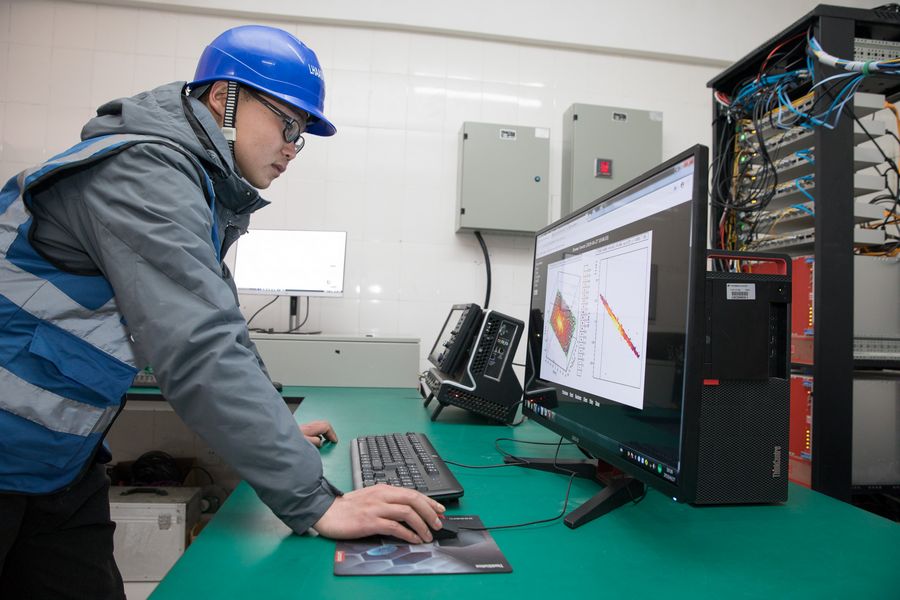
Researcher Ji Fang monitors data gained from water Cherenkov detectors in Daocheng County, southwest China's Sichuan Province, April 27, 2019. An observatory for detecting cosmic rays in southwest China's Sichuan Province recently began scientific observation as it launched operation of its first set of detectors. The project, known as Large High Altitude Air Shower Observatory (LHAASO), is located in the mountains of the eastern Qinghai-Tibet Plateau at an altitude of 4,410 meters. (Xinhua/Jin Liwang)
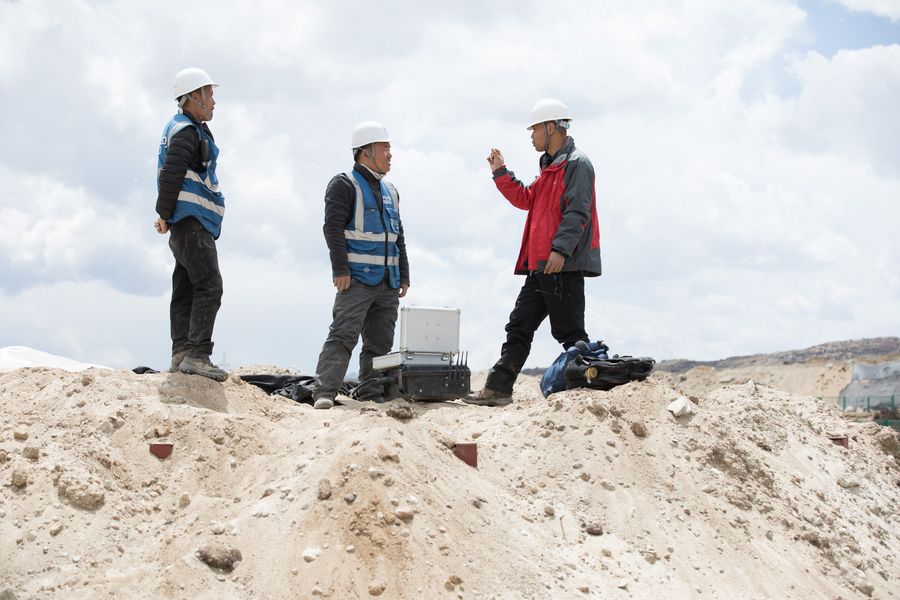
Researchers of the Large High Altitude Air Shower Observatory (LHAASO) discuss on the data gained from the detectors in Daocheng County, southwest China's Sichuan Province, April 28, 2019. An observatory for detecting cosmic rays in southwest China's Sichuan Province recently began scientific observation as it launched operation of its first set of detectors. The project, known as Large High Altitude Air Shower Observatory (LHAASO), is located in the mountains of the eastern Qinghai-Tibet Plateau at an altitude of 4,410 meters. (Xinhua/Jin Liwang)
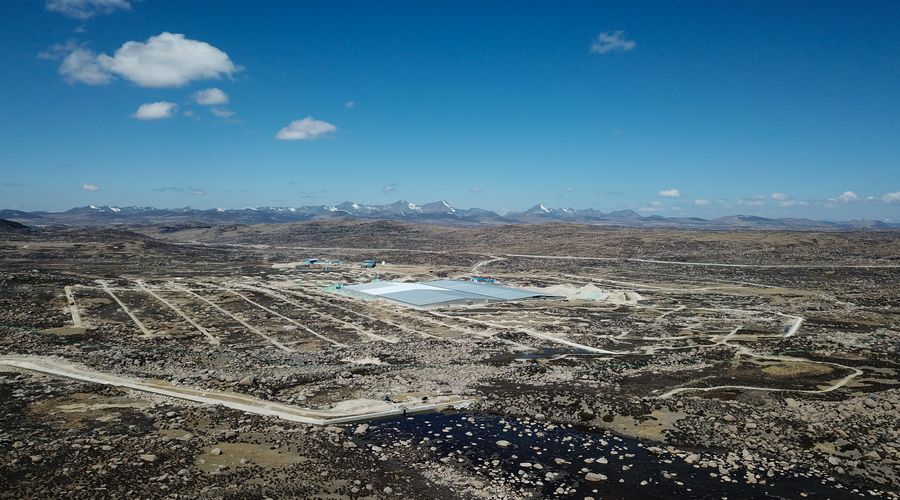
Aerial photo taken on April 27, 2019 shows the construction site of the Large High Altitude Air Shower Observatory (LHAASO) in Daocheng County, southwest China's Sichuan Province. An observatory for detecting cosmic rays in southwest China's Sichuan Province recently began scientific observation as it launched operation of its first set of detectors. The project, known as Large High Altitude Air Shower Observatory (LHAASO), is located in the mountains of the eastern Qinghai-Tibet Plateau at an altitude of 4,410 meters. (Xinhua/Jin Liwang)

Researchers of the Large High Altitude Air Shower Observatory (LHAASO) monitor data gained from the detectors in Daocheng County, southwest China's Sichuan Province, April 28, 2019. An observatory for detecting cosmic rays in southwest China's Sichuan Province recently began scientific observation as it launched operation of its first set of detectors. The project, known as Large High Altitude Air Shower Observatory (LHAASO), is located in the mountains of the eastern Qinghai-Tibet Plateau at an altitude of 4,410 meters. (Xinhua/Jin Liwang)
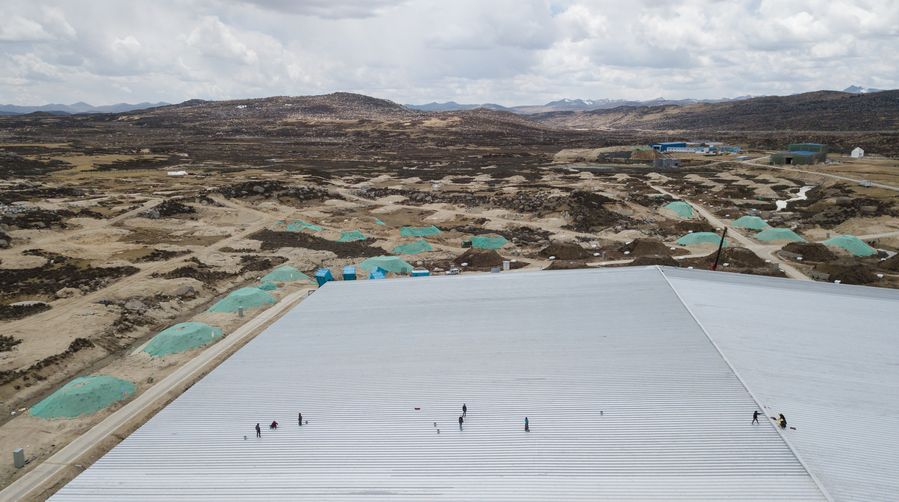
Aerial photo taken on April 28, 2019 shows workers constructing a facility for water Cherenkov detectors in Daocheng County, southwest China's Sichuan Province. An observatory for detecting cosmic rays in southwest China's Sichuan Province recently began scientific observation as it launched operation of its first set of detectors. The project, known as Large High Altitude Air Shower Observatory (LHAASO), is located in the mountains of the eastern Qinghai-Tibet Plateau at an altitude of 4,410 meters. (Xinhua/Jin Liwang)